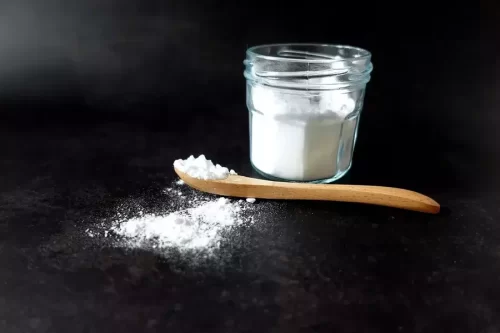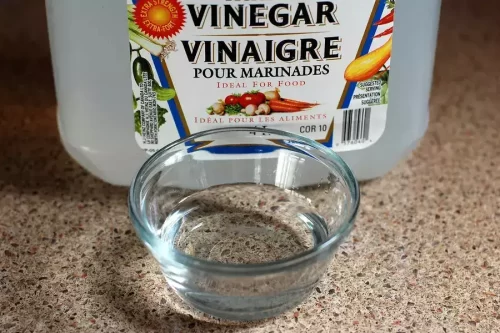
Should You Replace Your Engine Or Your Car? Part 1
Issue 27 • Engine & Transmission Tips • Part 1 Which Should You Do? Replace Your Engine Or Your Entire Car? Fraser Engine Company wants


You’re road-tripping for a short vaca, and unbeknownst to you, a small bottle of baby formula or milk pops open and saturates your car’s fabric seat or carpet. In the hustle and bustle of arrival at your destination, you miss this mishap entirely… until the next day… when your car smells like a New York City dumpster.
What can you do to eliminate an automobile-bound stench as quickly and effectively as possible? Here are Fraser’s top three suggestions, which incidentally are all natural!
(These methods will also work well with smells that originate from dry sources, like an old piece of string cheese under the driver’s seat.)
The first thing you’ll need to do after the smell manifests itself is find the source and remove as much of it as possible without introducing any additional dry or wet cleaning products. Common sense would have you drench a spot with cleaner and then try to get it all out with vigorous rubbing, but all you’re doing is driving it deeper into the car upholstery or carpet.
The best practice is to get out what you can with a vacuum and terrycloth towel. If it’s an indeterminable dry source, just imagine it’s sprinkle Parmesan cheese and suck as much out as you can. If it’s a wet source, draw it up with a super-absorbant towel using extended pressure.
As bizarre as this may sound, slitting a bag of charcoal briquettes wide-open, and leaving them on the floor of your car overnight, or even for a few days, could entirely extract a lingering odor from your car. Activated charcoal is an extremely porous compound, with the ability to attract and absorb airborne smells. The best thing is you won’t smell the charcoal and it’ll do its job without breaking down, so after you’re done with it, get the grille ready. Why charcoal first? Because odors can travel and permeate other surfaces, like your seatbelt material. Think of that bag of charcoal as your unseen, non-toxic, reusable odor eater.
 As our example suggests, most really bad car smells come from a wet source. So, baking soda, or sodium carbonate, is another highly effective, and remarkably inexpensive odor remover. As an alkaline powder, direct application of baking soda to a source will consume its odors and may help reduce resulting stains.
As our example suggests, most really bad car smells come from a wet source. So, baking soda, or sodium carbonate, is another highly effective, and remarkably inexpensive odor remover. As an alkaline powder, direct application of baking soda to a source will consume its odors and may help reduce resulting stains.
As with any tactile cleaning product, try to remove any solid stain source first. Then, lightly wet the affected area. (If you soak the source, you may drive the problem down into the fabric or carpet.) Liberally sprinkle baking soda over anything moist, and let it dry. Vacuum the clumps, and repeat. Lightly wet the area, and sprinkle the baking soda, this time working it in gently with a narrow tool like a pencil tip. Move the powder around where it might not have reached in the first application. Let dry completely and vacuum vigorously. (You can’t do this too many times.)
As with the charcoal treatment, leaving an open container of baking soda in the vehicle will act as a natural air deodorizer.
NOTE: Several websites we visited recommend kitty litter. We recommend against this as those products are not intended for porous surfaces, and can introduce clay and other materials into your car’s fabric or carpet.
So, your smell is stronger than the passive-aggressive suggestions above. It may be time for white vinegar. Known throughout the ages as a powerful cleaner, it is also an antibacterial and anti-fungal agent as well. NOTE: Straight white vinegar is as strong as acid on some materials, so PLEASE dilute it to a ratio of one-part vinegar to two-parts water, at least.

Make sure your vehicle’s doors and windows are wide open, and use them with caution, as this harsh-smelling compound can be rough on your lungs. But the smell of vinegar will certainly overpower the smell you’re trying to eradicate. Follow the instructions above for removing as much of the smell’s source before cleaning with vinegar.
Then, as counter-intuitive as it feels, spray a small amount of vinegar on the source, and cover it with an absorbent towel, with a heavy weight to apply pressure. Let the two work for 15 to 20 minutes, and repeat the process. On the third pass, you can introduce a circular cleaning motion with a wide-bristle brush. (One where the bristles are far apart, like a hair brush, not a toothbrush.) Your goal is to get the vinegar to the problem, and not push the problem further into the fabric or carpet. Rinse with clear water and a fresh towel. Let the area dry. Use a fan if desired, and do a sniff check in a few days.
Also, as with charcoal and baking soda, though not as convenient, you can leave white vinegar in a bowl in your car overnight to further purge the smell from other surfaces.
So, you’re back in the car, and the smell is still there. While you can try “chemical cleaners”, our experience over the years has been that you might get rid of the smell, but you may also lighten, darken, or otherwise damage your interior in the process.
Ozone cleaning will almost certainly remove a smell, permanently, but comes at a cost because it needs to be done by a professional. The process electrostatically kills odor-causing contaminants. It works like lightning in your car, leaving a crisp fresh smell once completed. Unfortunately, ozone, inhaled in enclosed spaces can be extremely harmful to your respiratory system, which is why we urge you to use a professional service at this point.

Issue 27 • Engine & Transmission Tips • Part 1 Which Should You Do? Replace Your Engine Or Your Entire Car? Fraser Engine Company wants

Hey there, classic car buffs and Ford enthusiasts! Fraser Engines here, and we’ve got a real treat for you today—a deep dive into the legendary

If you’re the proud owner of a Ford Explorer, you know that it’s not just a vehicle, but a ticket to adventure. This iconic SUV,

Part One of a Three-Part Series Batteries to Power! Turbine to Speed! The original 1966 television series Batman, and the signature Batmobile are still amazeballs!

Part Two of a Three-Part Series Hollywood Reshapes The Batmobile To Be Stylish and Badass While this is part two of our Batmobile series, it

More than just a vehicle, the Jeep Wrangler is your ultimate companion for any adventure. The Wrangler, paired with dependable engines like the Jeep 3.8L